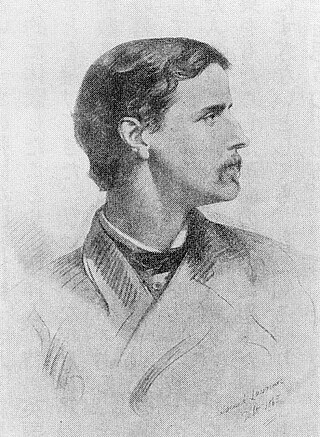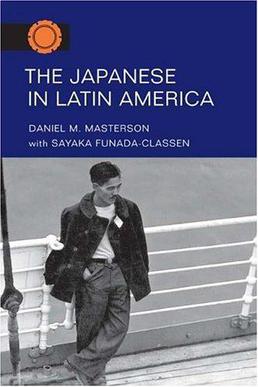Related Research Articles
Alistair Stuart MacLean was a Scottish novelist who wrote popular thrillers and adventure stories. Many of his novels have been adapted to film, most notably The Guns of Navarone (1957) and Ice Station Zebra (1963). In the late 1960s, encouraged by film producer Elliott Kastner, MacLean began to write original screenplays, concurrently with an accompanying novel. The most successful was the first of these, the 1968 film Where Eagles Dare, which was also a bestselling novel. MacLean also published two novels under the pseudonym Ian Stuart. His books are estimated to have sold over 150 million copies, making him one of the best-selling fiction authors of all time.

Peter Robert Lamont Brown is an Irish historian. He is the Rollins Professor of History Emeritus at Princeton University. Brown is credited with having brought coherence to the field of Late Antiquity, and is often regarded as the inventor of said field. His work has concerned, in particular, the religious culture of the later Roman Empire and early medieval Europe, and the relation between religion and society.

Algernon Bertram Freeman-Mitford, 1st Baron Redesdale, was a British diplomat, collector and writer, whose most notable work is Tales of Old Japan (1871). Nicknamed "Bertie", he was the paternal grandfather of the Mitford sisters.

Japan–United Kingdom relations are the bilateral and diplomatic relations between Japan and the United Kingdom.
Sir Arthur Henry Hugh Cortazzi, was a British diplomat. He was also a distinguished international businessman, academic, author and prominent Japanologist. He was Ambassador from the United Kingdom to Japan (1980–84), President of the Asiatic Society of Japan (1982–1983) and Chairman of the Japan Society of London (1985–95).

Japanese in the United Kingdom include British citizens of Japanese ancestry or permanent residents of Japanese birth or citizenship, as well as expatriate business professionals and their dependents on limited-term employment visas, students, trainees and young people participating in the UK government-sponsored Youth Mobility Scheme.

Ian Hill Nish CBE was a British academic. A specialist in Japanese studies, he was Emeritus Professor of International History at the London School of Economics and Political Science (LSE). His scholarship relating to the Anglo-Japanese Alliance, Japanese foreign policy and Anglo-Japanese relations in the twentieth century has garnered international renown.
Japanese people in France are French residents and citizens of Japanese ancestry, including both those who have settled in France permanently and those born in the country, along with a significant community of short-term expatriates who spend at most a few years in the country before moving on.

The Japanese School of Brussels a.s.b.l. is a Japanese international school located in Auderghem, Brussels. The school serves elementary and junior high school levels. It is Belgium's only Japanese international school. The Japanese Supplementary School of Brussels, a supplementary school operated on Saturdays, is held on the premises of the JSB.

The Paris Metropolitan Area includes a Japanese community. In 2023, the official number of Japanese residents in Paris was 10,592, compared to 16,277 a decade prior.
Brussels includes a Japanese community, most of whom live in the Auderghem district. Auderghem includes a Japanese international school serving the community, The Japanese School of Brussels.

The Japanese in Latin America is a 2004 book published by the University of Illinois Press about Japanese Latin Americans. The author is Daniel Masterson, while Sayaka Funada-Classen gave research assistance related to the Japanese language. The book discusses all of the major Japanese populations in Latin America and some other groups of Japanese diaspora who are not as well known. The Japanese populations of Argentina, Bolivia, Brazil, Chile, Colombia, Paraguay, Peru and Uruguay in South America, Cuba and the Dominican Republic in the Caribbean, Central America, and Mexico are all discussed in this book.

New Worlds, New Lives: Globalization and People of Japanese Descent in the Americas and from Latin America in Japan (ISBN 978-0804744621) is a 2002 academic book edited by Lane Ryo Hirabayashi, James A. Hirabayashi, and Akemi Kikumura-Yano and published by the Stanford University Press. The volume, edited by three Japanese American anthropologists, was produced by the Japanese American National Museum's International Nikkei Research Project. The same project produced the Encyclopedia of Japanese Descendants in the Americas: An Illustrated History of the Nikkei, and the two books are companion volumes.

Sessue Hayakawa: Silent Cinema and Transnational Stardom is a biography of actor Sessue Hayakawa, written by Daisuke Miyao, assistant professor of film at the University of Oregon, and published by Duke University Press. It won the 2007 Book Award in History from the Association of Asian American Studies and the John Hope Franklin Book Award from Duke University (2007).
A White Man's Province: British Columbia Politicians and Chinese and Japanese Immigrants, 1858-1914 is a 1989 book by Patricia E. Roy, published by the University of British Columbia Press. It discusses late 19th and early 20th century anti-Asian sentiment within British Columbia. Politicians from British Columbia referred to the place as "a white man's province", and the book includes an analysis of the phrase itself. As of 1992 Roy was planning to create a sequel.
Koreans in Japan: Critical Voices from the Margin is a 2000 book edited by Sonia Ryang and published by Routledge. It discusses Zainichi Koreans in Japan.
Brown, Not White: School Integration and the Chicano Movement in Houston is a 2005 book by Guadalupe San Miguel, Jr., published by the Texas A&M University Press. Brown, Not White discusses Chicano activism in Houston, Texas during the 20th century.

Transpacific Antiracism: Afro-Asian Solidarity in 20th-Century Black America, Japan, and Okinawa is a 2013 non-fiction book by Yuichiro Onishi, published by New York University Press. It details relations between African-Americans and Japanese people in civil rights issues.
Facing Two Ways: The Story of My Life is a memoir by Baroness Shidzué Ishimoto published in 1935 by Farrar & Rinehart with a second edition published by Stanford University Press in 1984 with an introduction and afterword by Barbara Molony.

Observations Made During a Voyage Round the World is Johann Reinhold Forster's systematic account of the scientific and ethnological results of the second voyage of James Cook. Forster, a former pastor who had become a Fellow of the Royal Society after writing several papers on natural history, and his son Georg had accompanied James Cook as naturalists on board of HMS Resolution. Originally, it had been planned that Forster's account should appear together with Cook's "narrative" of the voyage, but after lengthy arguments between Forster and John Montagu, 4th Earl of Sandwich, the First Lord of the Admiralty, Georg went ahead and published his own narrative instead in 1777, A Voyage Round the World. Observations then appeared in 1778, financed by subscriptions. It was translated into several European languages, including a German translation by Georg Forster.
References
- ↑ Lamont-Brown 1996 , p. 215
- 1 2 3 Nish 1996 , p. 166
- 1 2 3 4 Cortazzi 1996 , p. 75
- 1 2 3 4 MacLean 1996 , p. 120.
- 1 2 3 4 Nish 1996 , p. 167
- ↑ Lamont-Brown 1996 , p. 216
- ↑ MacLean 1996 , p. 121
Literature cited
- Cortazzi, Hugh (1996). "Raw fish & wrestling, just in time". RSA Journal (Book review). 144 (5472). Royal Society for the Encouragement of Arts, Manufactures and Commerce: 75. ISSN 0958-0433. JSTOR 41377170.
- Lamont-Brown, Raymond (1996). "The Japanese and Europe: Economic and Cultural Encounters". Contemporary Review . pp. 215–216.
- MacLean, Mairi (1996). "Book Reviews". Asia Pacific Business Review (Article). 3 (2). Royal Holloway, University of London: Taylor & Francis: 120–121. doi:10.1080/13602389600000107. ISSN 1360-2381.
- Nish, Ian (1997). "The Japanese and Europe". Asian Affairs . 28 (1). Royal Society of Asian Affairs: 166.